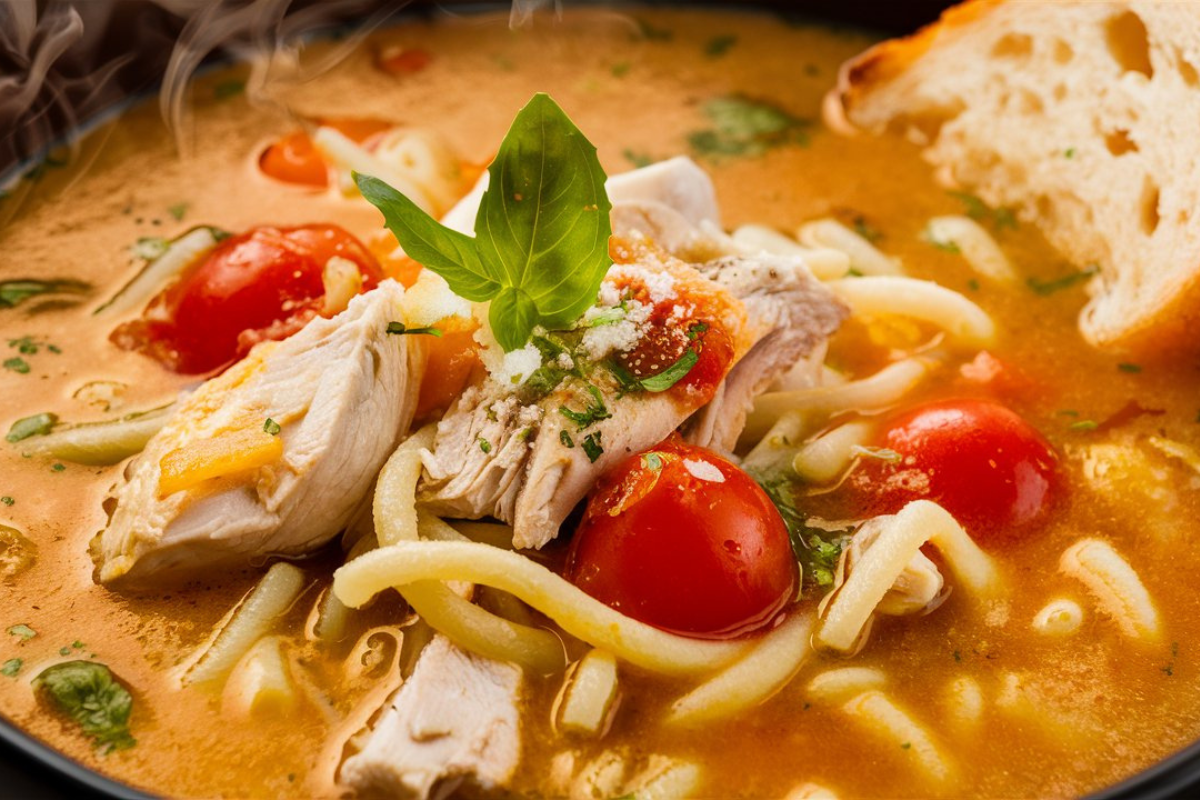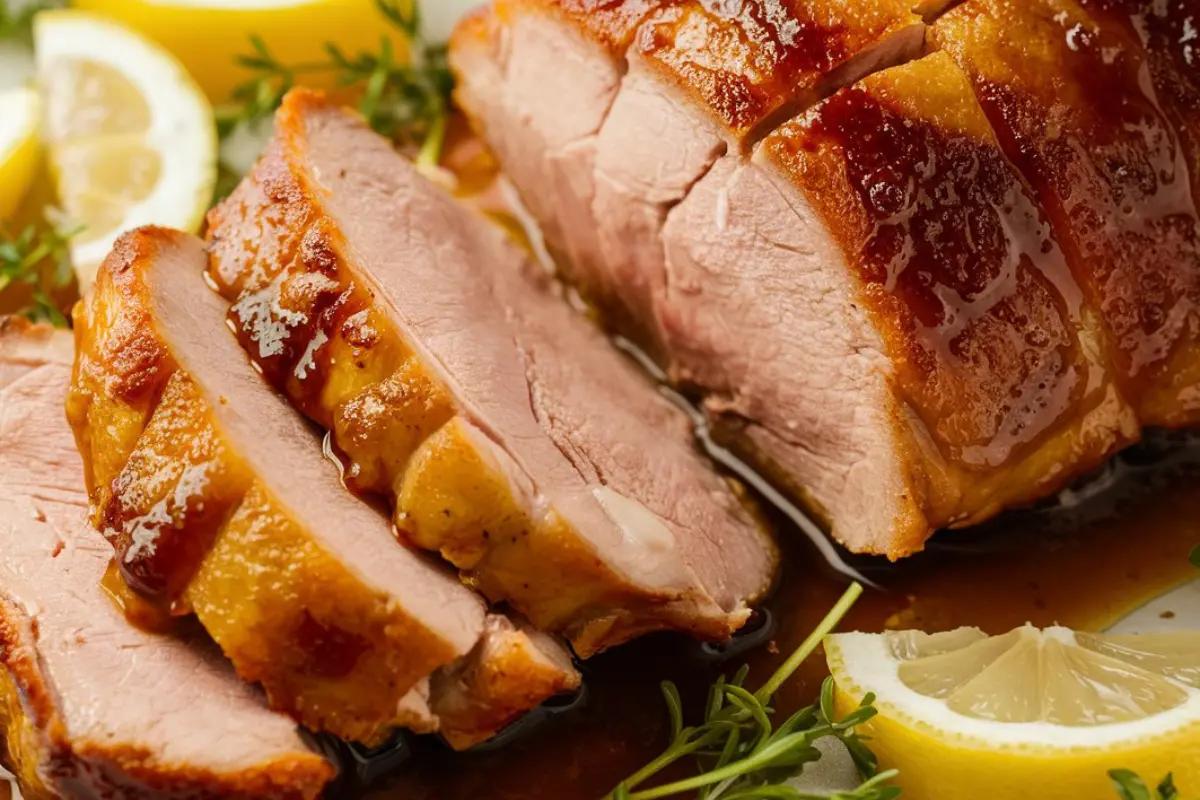Stuffed peppers stand as a colorful and savory cornerstone in many culinary traditions. Often filled to the brim with a hearty blend of meats, grains, and spices, they typically simmer in a rich tomato sauce. However, this article explores the delightful realm of stuffed peppers without tomato sauce, offering fresh takes and innovative recipes for those who prefer or need to avoid tomatoes. Consequently, whether you’re searching for a new weeknight staple or something unique to impress guests, these recipes promise to be both mouth-watering and easy to prepare.
Introduction to Stuffed Peppers Without Tomato Sauce
Stuffed peppers without tomato sauce? Absolutely! This twist on the traditional dish opens up a whole new world of flavors. By skipping the tomato, the natural sweetness of bell peppers shines through, complemented by a variety of fillings from around the globe. Not only does this variation cater to those with tomato allergies or intolerances, but it also introduces a refreshing change to your cooking repertoire.
Varieties of Fillings
The beauty of stuffed peppers lies in their versatility. You can stuff these vibrant veggies with almost anything, from spiced ground meats to fragrant grains. Here are some popular choices:
- Meat-based fillings: Think ground beef, lamb, or turkey, cooked with onions, garlic, and a blend of spices like cumin and paprika. For a leaner option, chicken or turkey offers a lighter but equally tasty filling.
- Vegetarian options: Quinoa, rice, or even couscous make excellent bases. Mix in legumes like lentils or chickpeas for added protein and texture. A sprinkle of cheese, like feta or goat cheese, can add a creamy touch to the filling.
Pepper Choices
Choosing the right type of pepper is just as important as the filling. While green bell peppers are common, experimenting with different colors like red, yellow, or orange can add a sweet note to your dish.
- Red peppers are generally sweeter than their green counterparts and roast beautifully.
- Yellow and orange peppers offer a milder flavor and stunning color contrast.
By carefully selecting the types of peppers and complementary fillings, you can transform the simple act of making stuffed peppers into a creative culinary adventure.
Exploring Different Stuffed Pepper Recipes Without Tomato Sauce
When venturing into the world of stuffed peppers without tomato sauce, the possibilities are as varied as they are delicious. Each type of filling not only brings its own unique flavors but also allows for cultural exploration through food.
Varieties of Fillings
Delving deeper into the fillings, each choice can transform the basic stuffed pepper into a reflection of various culinary traditions.
- Meat-based fillings: You can go classic with seasoned ground beef, perhaps mixed with some cooked rice or breadcrumbs. For a twist, why not try incorporating some crumbled sausage or bacon for a smoky flavor? Remember, the key is to ensure that the meat is well-seasoned and cooked before stuffing the peppers to maintain moisture and flavor.
- Vegetarian options: For those who prefer a meat-free option, the richness of cooked grains like quinoa or barley mixed with spices, herbs, and a little cheese can be equally satisfying. Add some chopped nuts for crunch or dried fruits for a hint of sweetness. These ingredients not only enhance the flavor but also boost the nutritional profile of your dish.
Pepper Choices
Expanding on the choice of peppers, each variety offers a different taste and texture that can enhance the overall dish.
- Red peppers are not just sweet; they roast up with a lovely char that adds depth to their flavor.
- Yellow and orange peppers, with their milder taste, are perfect for those who might find green peppers too bitter.
In experimenting with these varieties, you encourage a delightful exploration of tastes that can cater to any palate. Whether you’re in the mood for something hearty and meaty or light and vegetarian, there’s a stuffed pepper recipe waiting for you. The absence of tomato sauce brings out the natural flavors of the fillings and the peppers themselves, making each bite a vibrant experience.
Key Ingredients for Stuffed Peppers Without Tomato Sauce
Creating stuffed peppers without tomato sauce involves a mix of fresh ingredients and precise preparation. The right ingredients not only complement the natural flavors of the peppers but also enhance the overall taste of the fillings.
Ingredient List
Here’s a breakdown of the essential ingredients you’ll need to create a flavorful stuffed pepper dish:
- Proteins: Choose from a variety of meats like ground beef, turkey, or chicken. For a vegetarian twist, opt for quinoa, lentils, or chickpeas.
- Grains and Legumes: These are great for adding substance and texture. Rice, barley, and couscous are excellent choices.
- Vegetables: Onions, garlic, and mushrooms add depth, while spinach or kale can introduce a fresh, green element.
- Cheeses: Incorporate cheeses like mozzarella, cheddar, or a sprinkle of Parmesan for a creamy texture and rich flavor.
- Spices and Herbs: Salt, pepper, cumin, coriander, and fresh herbs like parsley or basil are crucial for seasoning.
Preparation Techniques
The preparation of stuffed peppers is straightforward but requires attention to detail to maximize flavor and ensure perfect cooking results.
- Pre-cooking Ingredients: Sautéing onions, garlic, and ground meat before stuffing ensures they are fully cooked and flavorful.
- Blanching Peppers: Briefly boiling the peppers before stuffing makes them just tender enough to be fully cooked in the oven without becoming mushy.
- Baking: Cook stuffed peppers in a preheated oven at 375°F (190°C) for about 20-30 minutes. This allows the flavors to meld beautifully and the peppers to soften to the perfect texture.
The combination of these ingredients and preparation steps results in a dish that is not only bursting with flavor but also appealing in presentation. By omitting the tomato sauce, the natural flavors of the peppers and the fillings shine, making each stuffed pepper a delightful and satisfying meal.
Detailed Recipe Walkthrough
Embarking on the preparation of stuffed peppers without tomato sauce can be a delightful culinary adventure. Here, we’ll guide you through two popular recipes that showcase the versatility and deliciousness of this dish.
Recipe 1: Classic Beef Stuffed Peppers
Ingredients:
- 4 large bell peppers (a mix of red and yellow)
- 1 lb ground beef
- 1 cup cooked rice
- 1 medium onion, finely chopped
- 2 cloves garlic, minced
- 1 cup shredded cheddar cheese
- 1 tsp salt
- 1/2 tsp black pepper
- 1 tsp paprika
- Fresh parsley, chopped (for garnish)
Preparation:
- Prepare the Peppers: Cut the tops off the peppers and remove the seeds. Blanch the peppers in boiling water for 5 minutes to soften. Drain and set aside.
- Cook the Filling: In a skillet, sauté the onion and garlic until translucent. Add the ground beef, salt, pepper, and paprika. Cook until the beef is browned. Mix in the cooked rice and half of the cheese.
- Stuff the Peppers: Fill each pepper with the beef and rice mixture. Place them in a baking dish.
- Bake: Top the peppers with the remaining cheese. Bake in a preheated oven at 375°F for about 20-25 minutes, or until the peppers are tender and the cheese is bubbly.
- Serve: Garnish with fresh parsley before serving.
Recipe 2: Quinoa and Vegetable Stuffed Peppers
Ingredients:
- 4 large bell peppers, any color
- 1 cup cooked quinoa
- 1 can black beans, rinsed and drained
- 1 cup corn kernels
- 1/2 cup diced tomatoes (fresh or canned without juice)
- 1 zucchini, diced
- 1 tsp cumin
- 1/2 tsp chili powder
- Salt and pepper to taste
- 1/2 cup crumbled feta cheese
Preparation:
- Prepare the Peppers: Same as in Recipe 1.
- Prepare the Filling: Combine quinoa, black beans, corn, zucchini, tomatoes, cumin, chili powder, salt, and pepper in a bowl.
- Stuff the Peppers: Spoon the quinoa and vegetable mixture into each blanched pepper. Place them in a baking dish.
- Bake: Cover the dish with foil and bake at 375°F for about 30 minutes. Remove the cover, add a layer of feta cheese, and continue baking for another 10 minutes.
- Serve: Allow to cool slightly before serving to allow the flavors to meld together.
These recipes highlight the flexibility of stuffed peppers without tomato sauce, providing options for both meat-lovers and vegetarians. Each recipe focuses on ingredients that complement the sweet, roasted flavor of the peppers, making them a hit for any meal.

Health Benefits of Stuffed Peppers
Stuffed peppers, especially when prepared without tomato sauce, offer a wealth of nutritional benefits. This section breaks down the key health contributions of the primary ingredients used in stuffed peppers, providing insight into why these dishes can be a valuable part of a balanced diet.
Nutritional Breakdown of Typical Stuffed Pepper Fillings
- Proteins (Meat and Legumes): Proteins like ground beef, turkey, and legumes such as lentils and chickpeas are excellent sources of amino acids, which are essential for muscle repair and growth. They also help to keep you feeling full longer, aiding in weight management.
- Grains (Rice, Quinoa): Grains are a fantastic source of fiber, which promotes digestive health and helps maintain blood sugar levels. Quinoa, in particular, is also a complete protein, which is rare for plant-based foods.
- Vegetables (Peppers, Onions, Garlic): Bell peppers are high in vitamin C, essential for immune health and skin integrity. Onions and garlic provide antioxidants and have anti-inflammatory properties.
- Cheeses: Cheeses are a good source of calcium and protein, important for bone health and muscle function. Opting for lower-fat cheese can help reduce overall calorie intake.
Benefits of Main Ingredients (Peppers, Grains, Meats, Cheeses)
Bell Peppers: Apart from being low in calories, bell peppers are rich in many vitamins and antioxidants, particularly vitamin A, which supports eye health, and vitamin C, which aids in iron absorption and promotes healthy skin. Moreover, their vibrant colors and sweet flavors make them a delightful addition to any meal.
Grains and Legumes: These ingredients not only add texture and flavor to the peppers but also contribute B vitamins, iron, and essential minerals that support metabolism and energy production. Additionally, they offer a hearty base that complements the natural sweetness of the peppers.
Meats and Cheeses: Meats provide heme iron, which is easily absorbed by the body, and B vitamins, particularly vitamin B12, which is vital for nerve function and the production of DNA and red blood cells. Furthermore, cheeses add a richness to the dish, enhancing the flavor profile while contributing essential fats and proteins.
By understanding the nutritional content and health benefits of the ingredients in stuffed peppers without tomato sauce, one can appreciate not only their taste but also their role in a nutritious diet. Whether you’re looking for a hearty meal that satisfies or a healthy dish that nourishes, stuffed peppers can be a colorful and tasty option.
Expert Cooking Tips for Perfect Stuffed Peppers
Achieving perfectly cooked and flavorful stuffed peppers without tomato sauce requires a bit of culinary finesse. Here are some expert tips and tricks that will help you master the art of making this versatile dish.
Best Practices for Selecting and Preparing Peppers
- Choosing the Right Peppers: Opt for firm, bright-colored peppers with smooth skins. They should feel heavy for their size, indicating they are juicy and fresh.
- Preparing the Peppers: Before stuffing, cut the tops off and carefully remove the seeds and membranes without puncturing the walls of the peppers. This will create a clean cavity for the fillings and ensure even cooking.
Tips for Achieving the Perfect Fill and Cook
Avoid Overfilling: It’s tempting to pack as much filling as possible into each pepper, but leaving a little space at the top helps the heat circulate inside the pepper, cooking the filling more evenly. Therefore, this technique ensures that every bite is perfectly tender and flavorful.
Balancing Moisture: Since you’re not using tomato sauce, which typically provides moisture, consider adding a splash of broth or water to the bottom of your baking dish before adding the peppers. Consequently, this will help steam the peppers slightly as they bake, keeping them moist and tender.
Enhancing Flavor: To deepen the flavors in your filling, consider toasting spices like cumin or corander before adding them to your meat or grains. Additionally, sautéing your onions and garlic until they’re golden-brown can also add a new dimension of sweetness and complexity to the stuffing.
Cheese as a Topping: If using cheese, add it towards the end of the baking time. This prevents the cheese from burning and ensures a beautifully melted, golden top. Thus, it adds an appealing finish and rich flavor to your dish.
By following these tips, your stuffed peppers will not only be delicious but also presented beautifully. Whether serving at a casual family dinner or a more formal gathering, these peppers are sure to impress with their vibrant colors and robust flavors.
Creative Variations and Modern Twists on Stuffed Peppers
Stuffed peppers are a canvas for culinary creativity, and when you remove tomato sauce from the equation, it opens the door to a wide array of flavor combinations and dietary adaptations. Here are some innovative twists on the traditional stuffed pepper that cater to various tastes and dietary needs.
Fusion Recipes
- Asian-Inspired Stuffed Peppers: Use a filling of ground turkey mixed with hoisin sauce, soy sauce, sesame oil, chopped water chestnuts, and green onions. This blend offers a sweet and savory flavor profile typical of many Asian dishes.
- Mediterranean Stuffed Peppers: Combine cooked couscous with crumbled feta, olives, sun-dried tomatoes, and a dash of oregano and thyme for a taste of the Mediterranean.
Dietary Adaptations
- Vegan Stuffed Peppers: Fill your peppers with a hearty mix of black beans, corn, diced tomatoes, and quinoa. Top with vegan cheese or a sprinkle of nutritional yeast for that cheesy texture and flavor.
- Low-Carb Stuffed Peppers: For a lower carbohydrate option, replace grains with cauliflower rice, adding ground chicken or beef and plenty of spices for flavor.
- Gluten-Free Stuffed Peppers: Most stuffed pepper recipes are naturally gluten-free, but always double-check your ingredients, such as spices or fillers, to ensure they do not contain hidden gluten.
These variations not only keep your meals exciting but also ensure that there’s an option for almost every dietary requirement or preference. By experimenting with different ingredients and cuisines, you can keep this classic dish fresh and new each time you make it. Whether you’re looking to spice up your dinner routine or need a dish that adheres to specific dietary rules, stuffed peppers can be adapted to suit any need.
Frequently Asked Questions
Stuffed peppers, without the addition of tomato sauce, often raise questions about preparation techniques, ingredient choices, and serving suggestions. Here, we address some of the most common inquiries to help you perfect your dish.
Do you need to boil peppers before stuffing them?
Yes, blanching the peppers in boiling water for about 5 minutes before stuffing them can be beneficial. This process softens the peppers slightly, which ensures they are perfectly tender once baked. It also helps maintain a vibrant color and reduces the overall cooking time in the oven.
What is a good substitute for stuffed peppers?
If you’re looking for an alternative to bell peppers, try stuffing other vegetables such as zucchini, tomatoes, or portobello mushrooms. These options provide similar hearty textures and are excellent vessels for various fillings.
How do you keep stuffed peppers from being watery?
To prevent your stuffed peppers from becoming watery, avoid using ingredients that release a lot of moisture during cooking, like fresh tomatoes or frozen vegetables, without properly draining them. Additionally, including absorbent ingredients like rice or breadcrumbs in your filling can help soak up excess moisture.
Why are stuffed peppers so bland?
The flavor of stuffed peppers greatly depends on the seasoning of the filling. Be generous with spices, herbs, and seasoning like salt, pepper, cumin, and garlic powder to enhance the natural flavors. Sauteing your filling’s aromatics, like onions and garlic, until caramelized can also add depth to the taste.
What are the ingredients for stuffed peppers?
Typical ingredients for stuffed peppers include:
- Bell peppers: Red, green, yellow, or orange
- Filling: A mix of protein (meat or legumes), grains (like rice or quinoa), vegetables, and seasonings
- Cheese: Optional, for topping
- Spices and herbs: For flavor enhancement
What goes well with stuffed peppers?
Stuffed peppers are quite versatile and can be paired with a variety of side dishes. Some popular options include:
- A simple green salad or Caesar salad
- Steamed vegetables
- Garlic bread or crusty rolls
- For a lighter option, a quinoa or couscous salad
These FAQs aim to clear up any confusion and help you make the most out of your stuffed peppers, ensuring they are delicious every time. Whether you’re tweaking the filling to suit your taste or pairing them with the perfect side, stuffed peppers can be a delightful and satisfying addition to any meal.




